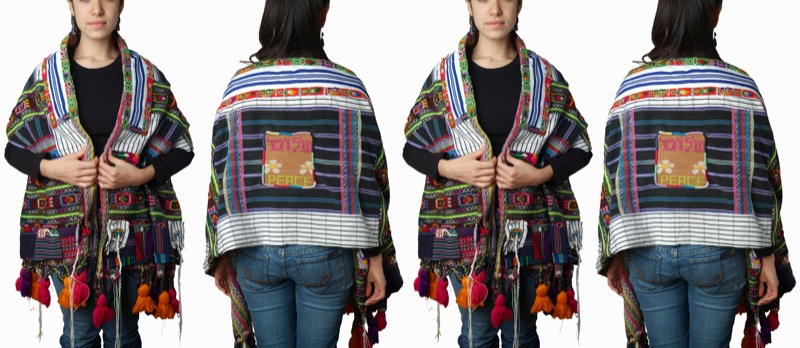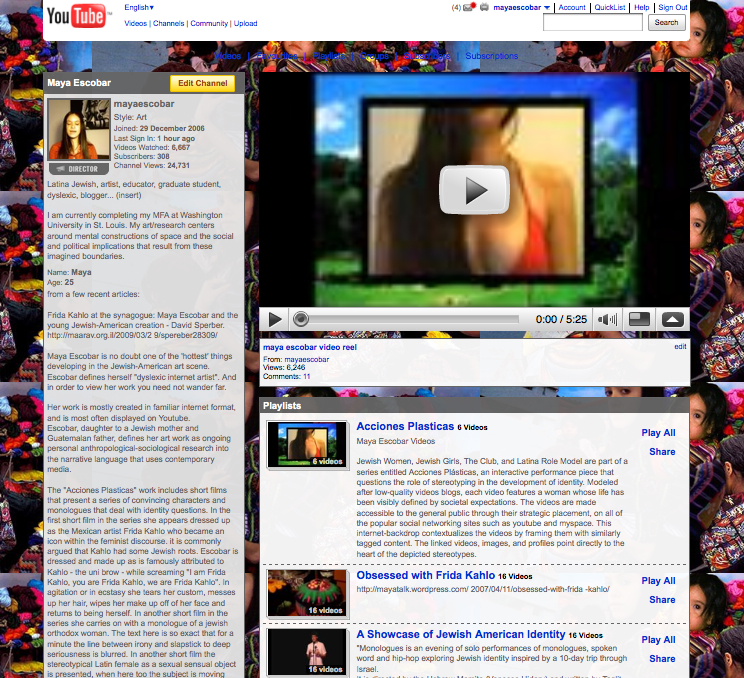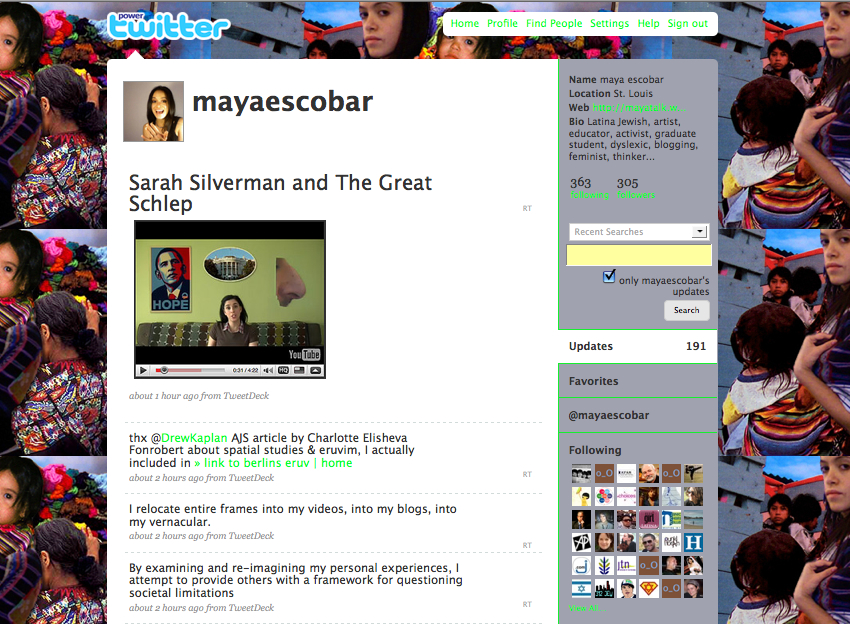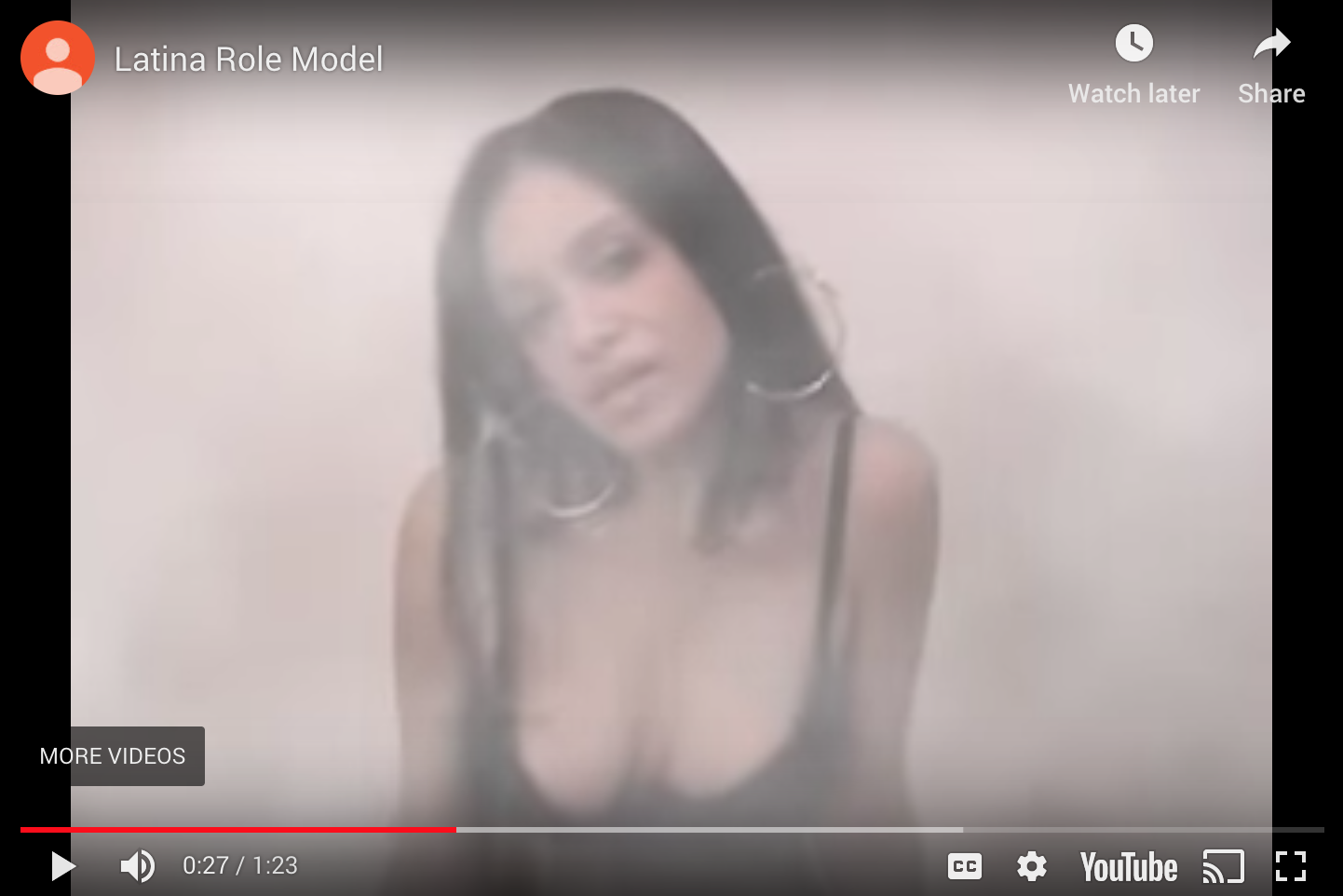Last weekend Carianne and I went to NY for the 2008 Whitney Biennial. As we expected from a survey of Contemporary American Art, not everything in the exhibition appealed to us. However neither of us was disappointed because we were not expecting to be unilaterally wowed. Upon leaving the Whitney, we got into an in-depth discussion about individuals' preconceived expectations, and the role they play in the determining interaction/interpretation/enjoyment, with actual works of art. Soon after this conversation, I was put to the test. As any young MFA student (traveling to New York) who has any hopes of some day having a career, Carianne and I were preparing to leave our hotel, to visit the elusive Chelsea Galleries, when I came upon an announcement for a show at El Museo Del Barrio, ARTE ≠ VIDA: ACTIONS BY ARTISTS OF THE AMERICAS
“Arte no es vida” surveys, for the first time ever, the vast array of performative actions created over the last half century by Latino artists in the United States and by artists working in Puerto Rico, the Dominican Republic, Cuba, Mexico, Central and South America.

Many of the works included in Arte ≠ Vida have subtle or overt political contexts and content: military dictatorships, civil wars, disappearances, invasions, brutality, censorship, civil rights struggles, immigration issues, discrimination, and economic woes have troubled the artists’ homelands continuously over the past four decades and therefore have infiltrated their consciousness. According to curator Deborah Cullen, “the exhibition title challenges the commonplace idea that art is equivalent to life, and life is art. What is proposed through these many works is that while art affirms and celebrates life with a regenerative force, and sharpens and provokes our critical senses, artistic actions which address inequalities and conflict are not equivalent to real life endured under actual repression.”
Over 75 artists and collectives are represented in Arte ≠ Vida, including ASCO, Tania Bruguera, CADA, Lygia Clark, Papo Colo, Juan Downey, Rafael Ferrer, Guillermo Gómez-Peña, Alberto Greco, Alfredo Jaar, Tony Labat, Ana Mendieta, Marta Minujin, Raphael Montañez-Ortiz, Hélio Oiticica, Tunga and contemporary practitioners including Francis Alÿs, Coco Fusco, Regina José Galindo, Teresa Margolles and Santiago Sierra. The exhibition is arranged in four major sections, in which each decade is represented by several specific themes that often cross national boundaries. 1960-1970 looks at select precursors, signaling, destructivism and neoconcretismo; 1970-1980 considers political protest, class struggle, happenings, land/body relationships and border crossing; 1980-1990 focuses upon anti-dictatorship protest and dreamscapes; and 1990-2000 references the Quincentenary, multiculturalism, postmodernism and endurance. An additional section highlights interventions that artists have carried out on television over the past 20 years. In these chronological, thematic groupings, viewers will be able to explore the interconnections among various artists’ actions as well as the surges of activities triggered by specific events in certain countries.
I didn't know what to do. This sounded to good to be true, but we also knew we were supposed to visit the Chelsea Galleries. I considered just buying the catalogue to the exhibition and skipping the show. I don't know if it was faith or instinct that got us there, but I can say with out any doubt in my mind that this was single handedly the best exhibition I have ever attended.
"¿Quién puede olvidar las huellas?," Regina Galindo. 2003.
Galindo walking through the streets of downtown Guatemala City, wetting her feet in a blood-filled bucket, and leaving a path of footprints from the Constitutional Court building to the Presidential Palace, where she was welcomed by a police battalion. The Court had just validated former dictator Efraín Ríos Montt, the country’s foremost author of genocide, as a presidential candidate.
[youtube="http://uk.youtube.com/watch?v=D46p71QdCTc"]
"La Familia Obrera," Oscar Bony. 1968.
Oscar Bony (1941-2002) hired a working-class family at twice their going wage to pose in a Buenos Aires gallery as a living work of art
[youtube=http://uk.youtube.com/watch?v=8N5xbLtokZY]
"Arte Reembolso/Art Rebate" by Elizabeth Sisco, Louis Hock and David Avalos. 1993.


[...] "The current economic recession has been debilitating for many artists regardless of the content of their work. Since this climate is characterized by a particular hostility toward controversial art, it is especially significant that Elizabeth Sisco. Louis Hock. and David Avalos have maintained a reputation for causing trouble in San Diego. Their collaborative public art projects receive scandalous reports in local and national news media and are often used as examples of the National Endowment for the Art' inadequate standards of quality. Their most current collaborative project Art Rebate (1993) refunded $10 bills to 450 undocumented workers along the San Diego, California/Mexico border. It was commissioned by the Museum of Contemporary Art, San Diego and Centro Cultural de la Raza as part of the "La Frontera/The Border" exhibition. In response to recent attention to border relations due to NAFTA and other government policies, the artists wished to refute the popular misconception that undocumented Mexican workers do not pay taxes as well as demonstrate. albeit with a small symbolic gesture, their appreciation of the undocumented as valued members of Western states, communities. Furthermore, I believe their work has significant implications for undocumented workers from other nations, residing in other regions of the United States - Caribbean workers in Florida and New York City, for example. If the communities in which the undocumented workers from these areas work and reside could also acknowledge their common contributions, in the form of taxes among other things, then perhaps we as a society could also begin to address the crimes inflicted upon these groups and apply our democratic notions of human rights to those within our national borders. [...]
"The projects are clearly controversial. That's not an accident. It's not as if someone latches onto the projects and holds them up as problematic. We intend to create something that is provocative and engenders a public discussion. It is public art, not art in the public. The work is defined by its performance in the community. The public discussion is crucial to the project. In order to begin a discussion we initiate an action - for example, a bus poster or a $10 rebate - that starts the ball rolling. We definitely aim to draw in the broadest spectrum of people, including those in power for the discussion. Obviously the media is not a neutral mechanism for communicating the events that unfold during the projects: it has an agenda that shapes its participation in the discussion. For example, much of the language used to describe Art Rebate in the press was the same inflammatory rhetoric promoted and laid out by the politicians who had given a profile of blame to the undocumented. Similarly, the press had a hard time imagining, and therefore was unable to fairly convey, the undocumented as taxpayers. The press was invited to experience the act of rebating these signed $10 bills. They were encouraged to ask the opinion of undocumented workers concerning their status as taxpayers, but the responses failed to appear prominently in the news media. The media coverage was not a means of evaluating the project but rather a component of the project. Their viewpoints describe a conceptual social space in which they situate the taxpayer and the undocumented in different realms."
"The Parthenon of Books/Homage to Democracy, Buenos Aires," Marta Minujín. 1983.

In December 1983 the Argentine Conceptual artist Marta Minujin and a group of helpers spent 17 days building a full-scale model of the Parthenon in a public park in Buenos Aires, Roberta Smith writes. Except for a metal scaffolding, it was made almost entirely of books wrapped in plastic. All the books had been banned by one of the most oppressive juntas in the country’s history, which was just being dismantled after Argentina’s first democratic election in a decade. “The Parthenon of Books/Homage to Democracy,” as Ms. Minujin’s work was titled, stood for about three weeks. Then the public was allowed to disassemble the piece and keep the books.
partenon de libros marta minujinAvenida 9 deJulio y Avenida Santa Fe. Buenos Aires. Argentina. Concebida como un monumento a la democracia y a la educación por el arte, Partenón constaba una estructura metálica, réplica del partenón, recubierta con prohibidos durante la dictadura militar.
"Undiscovered Amerindians," Coco Fusco and Guillermo Gomez-Peña. 1992.

[...]In a similar fashion to the live human spectacles of the past, Fusco and Gomez-Peña performed the role of cultural "other" for their museum audiences. While on display the artists' "traditional" daily rituals ranged from sewing voodoo dolls, to lifting weights to watching television to working on laptop computers. During feeding time museum guards passed bananas to the artists and when the couple needed to use the bathroom they were escorted from their cage on leashes. For a small donation, Fusco could be persuaded to dance (to rap music) or both performers would pose for Polaroids. Signs assured the visitors that the Guatinauis "were a jovial and playful race, with a genuine affection for the debris of Western industrialized popular culture . . . Both of the Guatinauis are quite affectionate in the cage, seemingly uninhibited in their physical and sexual habits despite the presence of an audience." Two museum guards from local institutions stood by the cage and supplied the inquisitive visitor with additional (equally fictitious) information about the couple. An encyclopedic-looking map of the Gulf of Mexico, for instance, showed the supposed geographic location of their island. Using maps, guides, and the ambiguous museum jargon, Fusco and Gomez-Peña employed the common vocabulary of the museum world to stage their own display[...]
"Construction of a Traditional Rural Oven,'' Víctor Grippo y Jorge Gamarra. 1972.
CONSTRUCCION DE UN HORNO POPULAR PARA HACER PAN
Intención: Trasladar un objeto conocido en un determinado entorno y por determinada gente, a otro entorno transitado por otro tipo de personas.Objeto: Revalorizar un elemento de uso cotidiano, lo que implica, además del aspecto constructivo escultórico, una actitud.Acción:a) Construcción del Hornob) Fabricación del Panc) Partición del Pan.Resultante pedagógica: Describir el proceso de construcción del Horno y de la fabricación del Pan. Distribuir una hoja. Será posible la participación del público mediante un intercambio de información.
"Untitled (Body Tracks),'' Ana Mendieta. 1974.

[youtube="http://uk.youtube.com/watch?v=FuDPapbMIJU"]





















